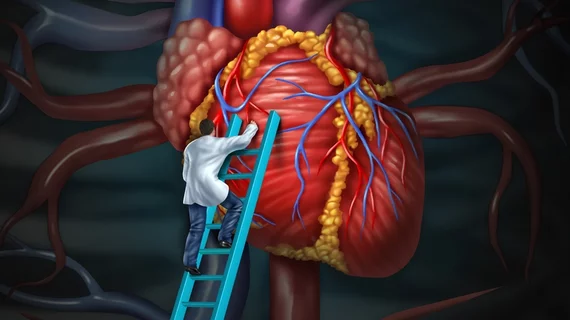Self-expanding vs. balloon-expandable TAVR valves: How they compare after 5 years
Self-expanding and balloon-expandable transcatheter heart valves (THVs) are associated with comparable long-term outcomes, according to a new five-year analysis published in the Journal of the American College of Cardiology.[1] However, there are some key differences every cardiologist should know.
“With the implementation of the TAVR procedure in younger and lower-risk patients, durability of THVs becomes more important,” wrote first author Hans-Josef Feistritzer MD, PhD, a cardiologist with Heart Center Leipzig at the University of Leipzig in Germany, and colleagues. “Therefore, comprehensive long-term outcome data of TAVR trials are needed.”
The SOLVE-TAVI clinical trial includes data from nearly 450 intermediate- and high-risk patients with severe, symptomatic aortic stenosis who underwent transfemoral transcatheter aortic valve replacement (TAVR). Patients were randomized to either receive a second-generation self-expanding Evolut R valve from Medtronic or a second-generation balloon-expandable Sapien 3 valve from Edwards Lifesciences. The same patients were also randomized to be treated with one of two anesthesia strategies: conscious sedation (CS) or general anesthesia (GA).
The two valve types and anesthesia strategies were similar after 30 days and again at one year. Feistritzer et al. returned to the data after five years to track the long-term impact of THV selection and choice of anesthesia.
Comparing second-generation transcatheter heart valves after 5 years
Overall, the study’s combined endpoint of all-cause mortality, stroke, moderate or severe paravalvular leak and permanent pacemaker implantation was seen in 67.7% of self-expanding valves and 63.4% of balloon-expandable valves. The slight difference was not seen as statistically significant.
However, the group did identify certain differences between the two valve types. The five-year stroke rate, for instance, was 2.2% for self-expanding valves and 9.6% for balloon-expandable valves. This was entirely driven by results from patients with small annuli. In addition, no patients with self-expanding valves experienced a myocardial infarction compared to 2.5% of patients with a balloon-expandable valve.
“One might speculate that the benefit of a supra-annular self-expanding valve regarding bioprosthetic-valve dysfunction in small anatomies potentially has an impact on stroke rates during long-term follow-up,” the authors wrote. “However, these findings need validation in future studies.”
Researchers only had limited imaging data to review five years into the study, but the mean aortic valve gradient was considerably lower for patients with a self-expanding valve (7 mmHg) than those with a balloon-expandable valve (11 mmHg). Quality of life (QOL), meanwhile, was comparable between the two valve types after five years.
The long-term impact of anesthesia strategies during TAVR
The other primary focus of this analysis, anesthesia-related outcomes, found that CS was associated with a significantly lower all-cause mortality rate (41.5%) than GA (54.3%). Other outcomes—stroke, myocardial infarction and acute kidney injury—were comparable. QOL and mean aortic valve gradient were also similar after five years
“This may be a chance finding, and importantly, if adjustments for multiple testing had been applied, this finding would remain above the threshold of statistical significance,” the authors wrote. “Nevertheless, the present findings are a cautionary signal for GA that requires further study.”
Click here to read the full study in the Journal of the American College of Cardiology, an American College of Cardiology journal.

